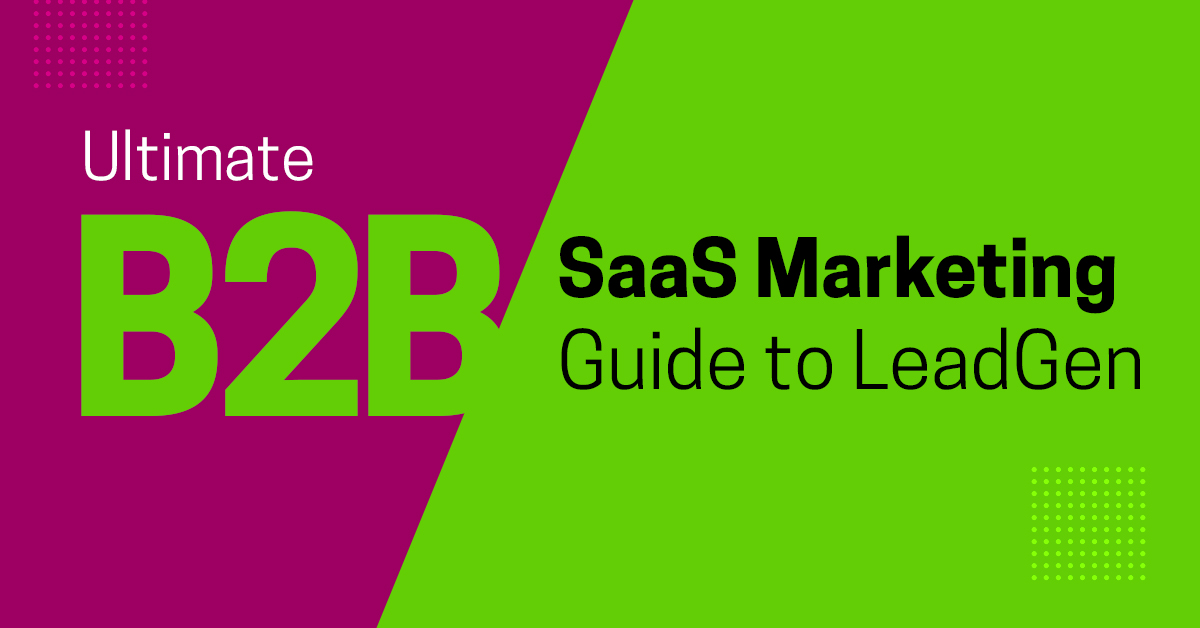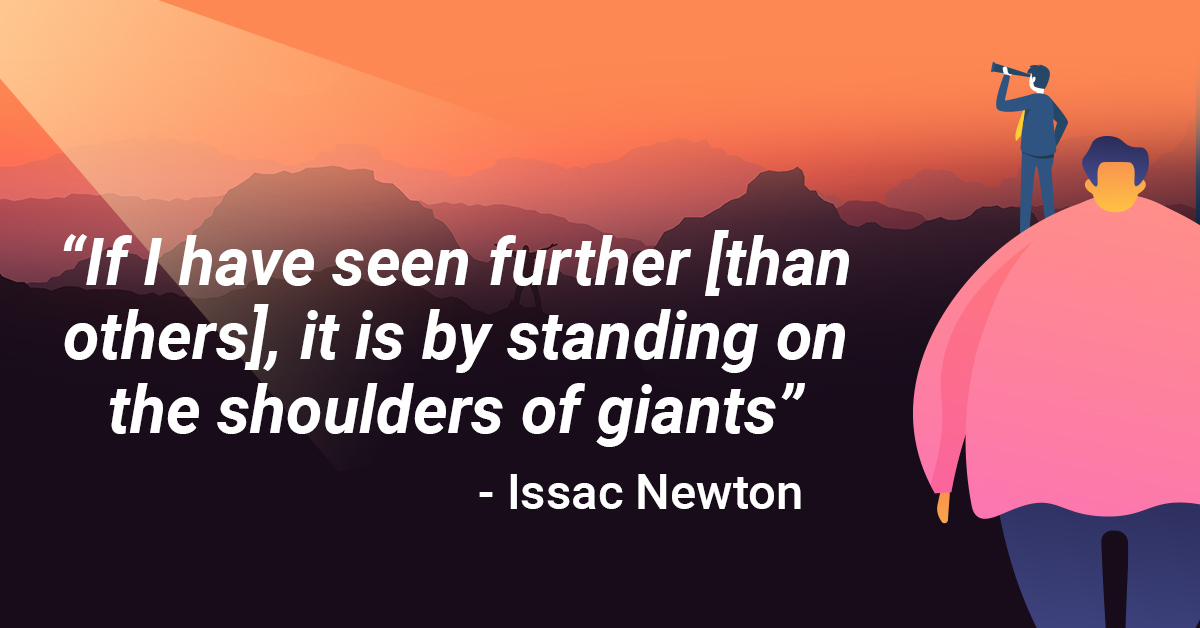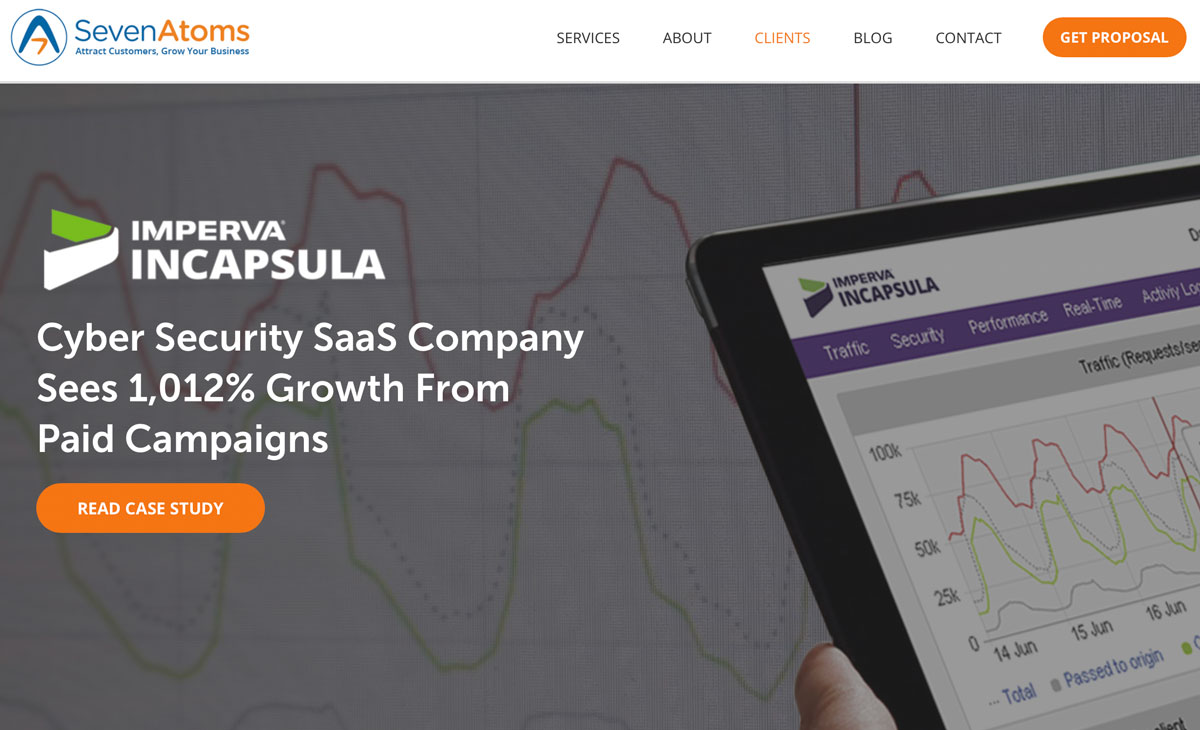The B2B software as a service (SaaS) market is growing faster than ever before. The SaaS market was estimated to be worth over $152 billion in 2021, and is expected to make a healthy increase to $208 billion by the end of 2022.
This means that there are more opportunities than ever to launch a successful SaaS business – and it’s now easier than ever to find investors willing to fund your startup! But don’t get ahead of yourself: “easier than ever” is not the same thing as easy.
Launching a successful B2B SaaS business isn’t easy. The field is saturated with new products and services that have failed to gain traction with customers. In fact, three out of four B2B software startups fail within their first five years of operation.
But that doesn’t have to be you! Learning how to properly strategize your B2B SaaS marketing campaigns and lead generation can help ensure that you’re one of the companies that makes it past the five-year mark.
We all know that the lifeblood of any organization is sales. But to up your sales, you have to focus on more than the sticker price and cold calls. You need leads.
Real success means developing a long-term, all-encompassing marketing strategy that keeps lead development and future scaling in mind.
So, whether you’re just getting started or you’re looking for new ways to grow your business, this complete guide will help you succeed in the B2B software market. We’ll focus on real strategies for B2B SaaS lead generation that anyone can use to complete!
Luckily, you don’t need a rocket science degree to become an expert in lead generation, just a can-do attitude and a lot of elbow grease. So, let’s jump in!
Table of Contents
What is B2B SaaS? (And Why Does It Matter for Marketing?)
Business-to-business (or “B2B”) software is any business application used by two or more organizations to increase efficiency and productivity. B2B software can be categorized based on the type of industry. For example, healthcare, financial services, and supply chain software all fall under the B2B umbrella.
B2B software is often delivered on a recurring subscription basis (more commonly known as software-as-a-service or SaaS). While B2B companies often sell to other businesses, they also sell to individuals within those organizations. For example, enterprise resource planning (ERP) software is often used by the C-suite of a business to track its supply chain and finances.
There are many other B2B SaaS services you’d likely recognize immediately by name. Microsoft Office, Google Drive, and MailChimp, for instance, are all big-name SaaS offerings designed to help businesses work more efficiently.
When you’re forming your SaaS lead generation strategy, it’s vital that you consider your audience carefully. The language we use when marketing to businesses and enterprise solutions is much different from that used when speaking to the average consumer. The sales cycles are also usually much lengthier and more involved. But the payoff is usually on a much larger scale.
For example, if you sell software license subscriptions to individual people, you might cast a wide, generalized net with your messaging and marketing. You want to catch as many fish as possible to make as many sales as possible.
But if you’re trying to sell 250 licenses to one company, your approach is different. You’ll likely want to focus your marketing messaging directly on the decision makers – the C-suite executives and directors most likely. Instead of a broad approach, you’ll be making a much more tailored campaign designed to address the specific problems that you’ll be solving for this company.
This is the first and most important rule of B2B SaaS marketing: “Know your Audience.”
Define Your SaaS Marketing Strategy
Before you move forward and build your actual marketing campaigns, you must define your B2B SaaS marketing strategy.
What kind of company do you want to be? What problems do you solve? What do you want your brand to represent?
Every decision you make as a business owner – from the products you create to the marketing channels you use – should be guided by the answers to these questions. Once you have defined your brand, you can carry that messaging through every campaign to tell a cohesive story.
Your marketing strategy is closely tied to your company culture. It’s the foundation on which you build your entire business. Your marketing strategy should be based on who you are as a brand and what your objectives are.
It’s important to note that when we say “marketing strategy” here, it doesn’t need to be a huge, long-term plan that’s 90 slides long. You should be able to summarize your marketing strategy in one or two sentences, a paragraph at most. It should be simple, actionable, and easy to understand for all employees.
Your marketing strategy is a living document that can and should change over time as your company evolves. A couple of great hypothetical examples include:
“We help Fortune 500 Companies reduce churn by equipping them with the software they need to solve customer problems and identify problems before they affect the whole company.”
Or, for another industry altogether:
“Our software helps medical professionals keep track of patient metrics and stats at a glance. This reduces confusion and helps save lives.”
It’s very similar to a mission statement – in fact, many of our customers use their mission statement to inform their marketing campaigns and decisions directly. This is a great way to ensure that everyone on your marketing team is on the same page and understands the ultimate goal of any creative assets or messaging.
Leverage Free SaaS Marketing Channels
When we think of lead generation, we often hear the “ka-CHING” of money flying out of our accounts. But that isn’t always the case!
A lot of B2B businesses make the mistake of focusing on paid advertising before leveraging free marketing channels. Paid advertising is important, but it shouldn’t be your only marketing strategy. You should be using as many free marketing channels as possible.
Here are three marketing channels you should start leveraging immediately:
- GoogleMyBusiness

We all know that Facebook is a platform where many businesses spend thousands of dollars, but you should remember that creating a profile and updating regularly is always free. The same goes for GoogleMyBusiness and LinkedIn. While you can certainly advertise with money, the best place to start is by fully owning and filling out your online profiles. You’ll be surprised how much response you can get without spending a dime!
There are also often platforms and directories where you can list your services for free that are industry-specific. Make sure you’re listed in those places by doing a cursory Google search of your industry with the word “directories” listed in it.
These channels are all cost-effective ways to grow your business and drive more leads and customers. You don’t have to spend a lot of money on these channels to see some results. In fact, the best marketers spend their time and energy creating content.
You can’t scale your business unless you start leveraging these free marketing channels. Be sure to track your progress over time and make adjustments to your tactics. You should see an upward trend over time.
Finding Your B2B SaaS Marketing Channels
You can have the best product in the world, but if you’re not marketing it correctly, you won’t be able to reach your customers. The only way to get your product in front of the right people is to invest in your B2B SaaS marketing efforts.
You should have a marketing strategy for all the channels your company is using, whether that’s email, social media, in-person networking, or something else entirely. In fact, you should have multiple marketing strategies for each channel.
Frequent interruptive advertising, like you might use for a B2C campaign, usually doesn’t work for B2B SaaS businesses. And when you’re trying to sell to high-level decision makers, interruptive advertising can actually work against you. Decision makers don’t have time to enter extraneous information for a free demo or read through 50 blogs on how your product can help them.
Remove barriers to entry by creating landing pages and ads that are easy to understand and provide immediate opportunities to click through and sign up.
To find the right B2B SaaS marketing channels for your company, start by asking yourself these questions: Who are your customers? What challenges are they facing? How can you help solve their problems? Once you’ve identified your target audience and the challenges they’re facing, you can start to look for different channels to reach them.
If you’re not sure where to start, here are a few suggestions:
- Email marketing
- Content marketing
- Social media platforms
- Outbound marketing
- Online communities (LinkedIn Groups, Facebook Groups, etc.)
Paid SaaS Marketing
Ideally, you’d be able to generate enough revenue from these free marketing channels to grow your business organically. But that’s just not realistic in today’s market. Our feeds are covered in advertisements from companies who understand not just consumer demands but also the algorithms required to reach them.
To stand out from the crowd, you first have to enter the arena. And paying for online advertising is just the entrance fee. After that, you have to work on your creative and design, your ability to create niche audiences based on demographics, and your content and messaging.
The best way to scale your business is to spend money on channels that have a proven track record. It’s critical that you spend your money wisely. That means choosing channels with data to support their effectiveness.
This is especially true if you have a smaller budget. A/B test your campaigns in the beginning to see which platforms are the most effective for your particular audience. Then you can be sure that you’re spending money where it’s actually effective.
It’s also important that you only spend money on marketing channels that have a positive return on investment. You have to be able to track your progress. Otherwise, you won’t know if your investment is paying off!
Remember to gather data and really study your analytics along the way. Your KPIs and numbers will tell you the story of your campaign – whether it’s a success, a failure, or there’s room for improvement.
Always keep growth in mind as you make B2B SaaS lead generation and marketing decisions. You don’t want to spend money on branding or channels that don’t drive leads and customers.
Make User Feedback a Priority
One of the best ways to grow your B2B SaaS business is to find ways to collect feedback from your customers. You can use that feedback to learn about your customers’ pain points, discover what problems your product solves, and identify new ways to improve your service.
The best B2B SaaS companies are obsessed with customer feedback. They’re always asking customers how they can improve and what new features they’d like to see added. If you want to grow your business, you need to make collecting customer feedback a priority. You can collect feedback in a number of ways:
- Surveys
- User interviews
- Customer support
- Responding to customer reviews
- Consumer panels
Not sure how customer feedback can help or already overwhelmed by feedback and a backlog of patch requests? Start by sorting through your information and grouping similar or identical comments or requests.
Are 30% of your complaints based on a specific bug? Fix that bug first. Are you getting complaints about complex processes for the help desk? Simplify or offer live chat with real techs.
It sounds simple, but you’d be surprised how many companies just don’t gather the data required to really listen to their customers. Put yourself ahead by putting in the work.
Create SaaS Lead Magnets
The most common examples of lead magnets are ebooks, infographics, and other gated content. We’ve all gained access to a download by entering our email, name, and other personal information.
But for B2B SaaS businesses, the best lead magnets are the interactive kind – and that preferably solves a common problem. Think about your software carefully. Consider how your users use the software and what their common pain points are.
Then, try to come up with an interactive solution. It can be as easy as a checklist that streamlines a complicated process or as advanced as a dashboard that displays their key metrics, etc. (Just make sure it’s something you’re willing to give away for free).
It doesn’t even have to be related to your product directly! If you work with accountants, creating an Excel sheet with a certain formula programmed into it could make their lives so much easier. This provides value, builds trust with your brand, and can earn you a lot of SEO credit in backlinks and organic traffic if it becomes popular!
Develop SaaS Case Studies
As we mentioned previously, when you’re working in B2B SaaS lead generation you’re dealing with C-suite and director-level decision makers. And the higher up they are, the quicker they want you to cut to the chase. They want to know how your product will help them make more money and reach more customers.
And the best way to demonstrate what your product can do is to create comprehensive case studies. Case studies build trust because they are from the customer’s point of view. They tell a story of success with your product as the hero.
If you work with one industry, you can develop a few case studies based on the levels of results or size of the company. If you work across multiple industries, you should develop case studies that focus on those individual industries.
You can also use these case studies at multiple points in the sales cycle – in advertising, in downloads, and in sales pitches! Just make sure you’re repackaging the information in a way that’s appropriate for the platform and visually pleasing.
Build Your Own Data-Driven Content
Whenever possible, you should try to create content that is based on original research. Make sure that you are gathering key metrics and analytics at every stage of your product cycle – from development to use to client churn. This data will help you make meaningful decisions about your marketing strategy and will also set you apart as a subject matter expert in your field!
Use your data to figure out what your potential clients are interested in and how you can best communicate with them. Then, make sure that you’re repackaging your data into as many platforms as possible – podcasts, blogs, ads, social posts, videos – since you can never have too much content.
Not sure where to start? Think about the following questions and ideas to help inform your own data-driven content strategy.
- Understand your topic – data can tell you which content people respond to most.
- Decide what type of data you need – every study has its own required KPIs.
- Choose how you will gather your data – surveys, web scraping, Google Analytics, interviews, etc.
- Analyze your data – figure out how to analyze and read your data to craft a compelling narrative.
Once you’ve developed your content, make sure you release it on as many platforms as possible!
Attract Customers. Grow Your Business.
If you have more questions about B2B SaaS marketing strategies or want to learn how to implement these strategies in your own B2B SaaS company, contact SevenAtoms – a leading B2B lead generation agency. We specialize in assisting B2B SaaS companies in growing their businesses!




